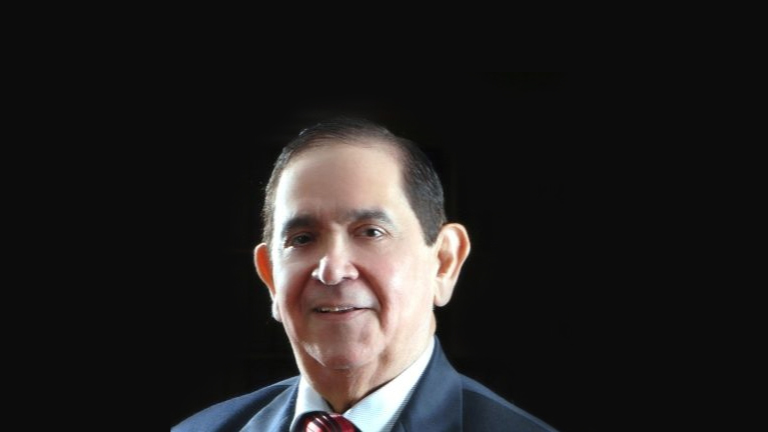[:en]On the night of Sunday, October 1st, Stephen Paddock, a 64-year-old white male opened fire from his room on the 32nd floor of the Mandalay Bay hotel in Las Vegas, Nevada, killing 58 people and injuring another 527.
The victims of what is now considered the largest shooting in the history of the United States were part of the 22,000 people enjoying the presentation of country music star Jason Aldean during the final part of the Route 91 Harvest Festival.
The event, started in 2014 by Live Nation Entertainment, offered a three-day show that took place at Las Vegas Village, a 15-acre open stage, right next to Las Vegas Boulevard.
Several weeks after the tragedy, we now know that Paddock killed himself after shooting some semiautomatic weapons he had, and which he modified for an increased range, but the investigation continues to try and uncover what motivated this crime.
“As days go by a lot of the information has changed,” explained Sargent Robert J. Wondra, member of the SWAT unit of the Omaha Police Department (OPD), who added that “in cases such as this one there is always a lot of confusion, but it seems that this suspect, as has happened for similar cases, planned the attack in advance.”
This means that the idea that someone could suddenly snap and commit such a violent crime has been ruled out since there is evidence that Paddock took his tine to organize everything since “he went into his room with multiple guns, checked into his room since the Thursday before the day of the shooting, and he had been looking for other rooms in the country that also had a clear view of public concerts.”
“We now know that he had some type of mental illness,” said Sargent Wondra, “and in cases such as this one, if we consider all warning signs, mental illness, in general, is a very important sign.”
Paddock started shooting at the innocent crowd because criminals like him “want to create confusion and originate massive chaos because they want to get as many victims as possible.”
Sargent Wondra has been part of OPD for 25 years ago and works at the Southeast Precinct, something he greatly enjoys since it allows him to work in South Omaha in an area that “has members from all ethnic groups in the city.”
The Special Weapons and Tactics (SWAT) team he represents responds to situations that present a big risk for our society: “When people need help they call 911, but when the police need help, they call the SWAT unit.”
Among the main duties of Sargent Wondra and his colleagues they support police officers who are dealing with barricades or who must present arrest warrants to highly dangerous suspects.
Wondra wanted to be a police officer since he was five years old, but after college, he enrolled in the United States Marine Corps. He was diagnosed with diabetes during Operation Storm, and he was relieved from duty to become part of OPD.
From that moment, he has been focused in keeping his community safe, especially through presentations and workshops where he teaches those in attendance how to prevent something as regrettable as what happened in Las Vegas: “Our city is not exempt from something like that, and we already had an incident back in 2007 at the Von Maur store in the mall, as well as at Millard South High (2011). So the question isn’t if this could happen in Omaha, but when and how.”
Since 1999, during the special training of its members, the OPD uses the term active killer instead of active shooter: “Active killers can use knifes, machetes, vehicles, fire, and acid, and not just firearms.”
Because of all this, and to protect us, Sargent Wondra recommends that the most important thing we can do is always to be aware of the signs that show someone wants to commit murder because it might be possible to take action and help them before it is too late. The most valuable thing anyone can do when in unfortunate circumstances like any shootings at their workplace, school, or neighborhood, is to follow what Sargent Wondra called the 7 Outs:
1) Figure Out. Identify what is going on.
2) Get Out. Get away from that place. Put some distance between yourself and the perpetrator.
3) Call Out. Call 911 and ask for help as you describe what you saw, not what you imagine. Do not waste time by calling more people.
4) Hide Out. If you can’t get out, hide.
5) Keep Out. Block the entrance to the place you’re hiding in.
6) Help Out. Help to control those around you, aid the wounded and those who have some disability.
7) Take Out. If there is no other option, prepare yourself to attack the criminal with anything you might have at hand.
Your life and the lives of others will depend on your capacity for response. Inform yourself, practice, and share these recommendations.
Sargent Robert Wondra / SWAT, OPD
[email protected][:es]La noche del domingo primero de octubre, poco después de las 10 de la noche, Stephen Paddock, un hombre blanco de 64 años de edad, abrió fuego desde su habitación en el piso 32 del hotel Mandalay Bay en Las Vegas, Nevada, matando a 58 personas e hiriendo a 527.
Las víctimas de lo que hasta hoy se considera como el mayor tiroteo en la historia de Estados Unidos, eran parte de los 22 mil asistentes que disfrutaban de la presentación de la estrella de música country, Jason Aldean, durante el cierre del Route 91 Harvest Festival.
El evento fundado en el 2014 por Live Nation Entertainment, ofrecía un programa con duración de tres días y se realizaba en Las Vegas Village, un espacio de 15 acres con un escenario al aire libre, al lado de Las Vegas Boulevard.
A tres semanas de la tragedia, conocemos que Paddock se suicidó tras disparar algunas de las armas semiautomáticas que tenían en su poder, mismas que modificó para lograr un mayor alcance, pero las investigaciones continúan puesto que aún se desconoce qué lo motivó a cometer un crimen de tal magnitud.
“Con el paso de los días mucha de la información ha ido cambiando”, explicó el Sargento Robert J. Wondra, miembro de la unidad SWAT del Departamento de Policía de Omaha (OPD), quien agregó que “en casos así siempre existe mucha confusión pero tal parece que éste sospechoso, al igual que otros en casos similares, planeó el ataque con anticipación”.
Eso significa que la idea de que alguien puede alterarse de repente, por así decirlo, y cometer un acto tan sangriento, queda descartada, toda vez que existen pruebas de que Paddock se tomó tiempo para organizarlo ya que “ingresó con múltiples armas a su cuarto, se hospedó desde el jueves anterior y antes estuvo buscando otras habitaciones con vista a otros conciertos públicos en toda la nación”.
“Sabemos que seguramente tenía algún tipo de problemas mentales – señaló el Sargento Wondra -, y en casos como éste, si consideramos todas las señales de alerta, los trastornos mentales son por lo general, la señal más importante”.
Paddock disparó sin piedad hacia una multitud inocente, porque criminales como él, “buscan crear confusión, originando un caos masivo, pues su deseo es conseguir el mayor número de víctimas posibles”.
El Sargento Wondra lleva 25 años en el OPD y labora en la Jefatura del Sureste, algo que disfruta mucho porque le permite trabajar en el sur de Omaha y en una zona que “tienen a todos los grupos étnicos de la ciudad”.
El Equipo de Armas y Tácticas Especiales (SWAT) que representa, responde a situaciones que representan un mayor riesgo en nuestra sociedad: “Cuando las personas necesitan ayuda llaman al 911, pero cuando la policía necesita ayuda, le llaman a la unidad SWAT”.
Entre las funciones principales del Sargento Wondra y sus compañeros, están las de apoyar a oficiales de policía que se enfrentan a barricadas o que deben entregar órdenes de arresto a sospechosos de alta peligrosidad.
Wondra deseaba ser policía desde que tenía 5 años, pero después de la universidad se enroló en la Infantería de Marina (United States Marine Corps). Fue diagnosticado con diabetes durante la operación Tormenta del Desierto y dejó su puesto para ingresar al OPD.
Desde entonces está enfocado en mantener segura a su comunidad particularmente mediante presentaciones y talleres donde enseña a los participantes a prevenir algo tan lamentable como lo ocurrido en Las Vegas: “Nuestra ciudad no está exenta de sufrir algo así, nosotros ya tuvimos un incidente en el 2007 en la tienda Von Maur del centro comercial y en la preparatoria Millard South (2011). Así que la pregunta no es si podría suceder en Omaha, sino dónde y cómo pasaría”.
A propósito, desde 1999 el OPD utiliza el término active killer (asesino en serie) en vez de active shooter (tirador o francotirador activo), durante los entrenamientos especiales de sus miembros: “Porque los asesinos en serie pueden usar cuchillos, machetes, vehículos, fuego, ácido y no únicamente armas de fuego”.
Por ello y a fin de protegernos, el Sargento Wondra recomendó que lo principal es permaneces pendientes a las señales de alerta de quienes expresan el deseo de cometer un asesinato, porque quizás se puede intervenir y auxiliarlos a tiempo.
Lo más valioso que cualquier persona puede hacer al encontrarse en circunstancias desafortunadas como un tiroteo en su centro de trabajo, escuela o vecindario, es seguir lo que el Sargento Wondra detalló como “7 Outs”,
1) Figure Out. Identifique lo que está sucediendo.
2) Get Out. Aléjese del lugar. Ponga distancia entre el perpetrador y usted.
3) Call Out. Llame al 911 y pida ayuda describiendo lo que vio, no lo que imagina. No pierda tiempo llamando a más personas.
4) Hide Out. Si no puede salirse, escóndase.
5) Keep Out. Bloquee la entrada al sitio donde se esconde.
6) Help Out. Ayude a controlar a quienes estén alrededor, auxilie a heridos o a quienes tienen alguna discapacidad.
7) Take Out. Si no queda otra opción, prepárese para atacar al criminal con lo que tenga a la mano.
Su vida y la de los demás, dependen de su capacidad de respuesta. Infórmese, practique y comparta éstas recomendaciones.
Sargento Robert Wondra / SWAT, OPD
[:]




